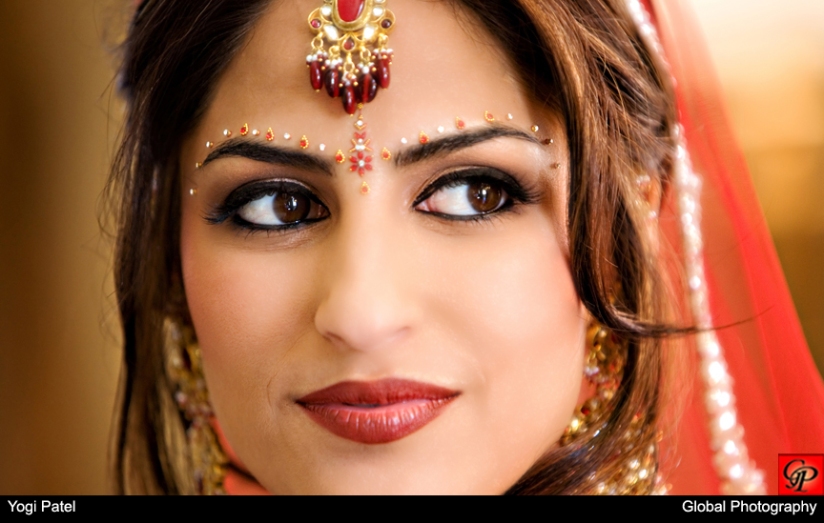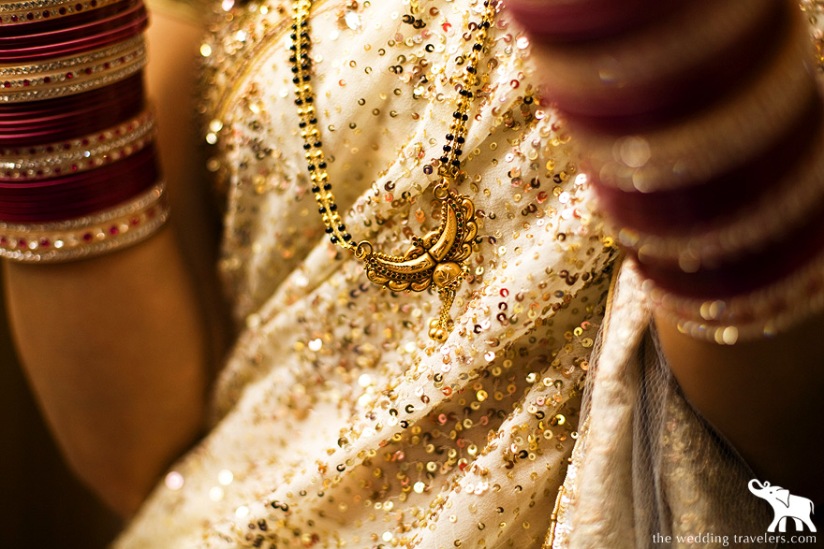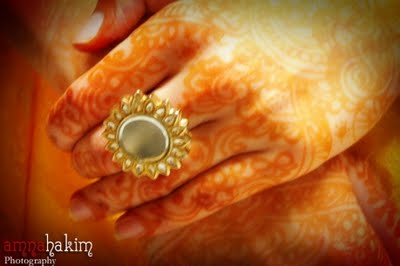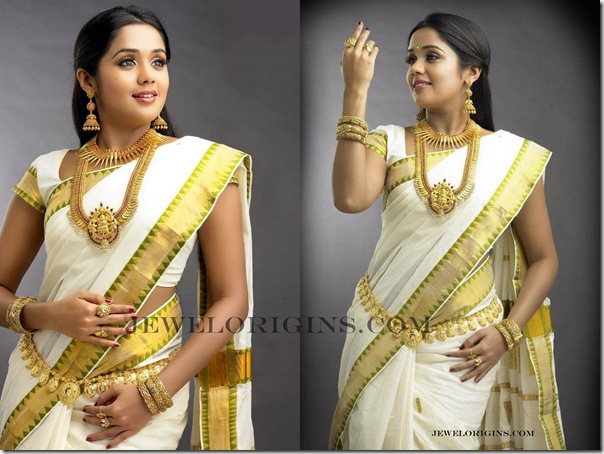Bollywood Brides

Aishwarya Rai Bachchan
It was during the promotion of Mani Ratnam's Guru when Abhishek Bachchan proposed to Aishwarya Rai in the balcony of a New York City hotel.
Immediately after the duo got engaged at the Bachchan residence, Jalsa followed by an extensively-covered wedding, right from the invitation card featuring Harivansh Rai Bachchan's poem, Aishwarya's carefully accumulated trousseau to the various mithais, star-studded programs at the sangeet, to Abhishek climbing the customary ghodiin an off-white sherwani with accessorised with polki and emerald jewels, a Bollywood-filled baraat to his exchange of vows with Ash, clad in a glorious gold sari and tons of kundan-themed jewelry.
Considering the curiosity about the celebrity couple and controversy over who got invited while who was left out, this grand affair continued to make headlines for several days after the marriage.
Immediately after the duo got engaged at the Bachchan residence, Jalsa followed by an extensively-covered wedding, right from the invitation card featuring Harivansh Rai Bachchan's poem, Aishwarya's carefully accumulated trousseau to the various mithais, star-studded programs at the sangeet, to Abhishek climbing the customary ghodiin an off-white sherwani with accessorised with polki and emerald jewels, a Bollywood-filled baraat to his exchange of vows with Ash, clad in a glorious gold sari and tons of kundan-themed jewelry.
Considering the curiosity about the celebrity couple and controversy over who got invited while who was left out, this grand affair continued to make headlines for several days after the marriage.
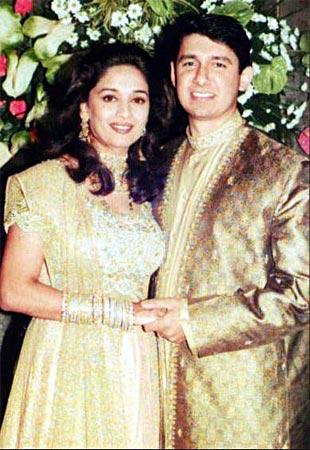
After years of reigning as Bollywood's undisputed queen, the actress flashed her million-dollar once again to throw a party. Only this wasn't a birthday bash but a lavish reception at The Club to celebrate her arranged marriage with Colorado-based doctor, Shriram Nene in a hush-hush ceremony in US.
The star of blockbusters like Tezaab, Hum Aapke Hain Kounand Dil To Pagal Hai glowed in a copper and peach lehengadesigned by Reza Shariffi and introduced her non-filmi hubby to Mumbai's glitterati like Dilip Kumar, Amitabh Bachchan and Anil Kapoor
The star of blockbusters like Tezaab, Hum Aapke Hain Kounand Dil To Pagal Hai glowed in a copper and peach lehengadesigned by Reza Shariffi and introduced her non-filmi hubby to Mumbai's glitterati like Dilip Kumar, Amitabh Bachchan and Anil Kapoor
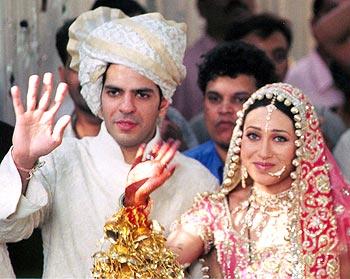
After her high-profile engagement to Abhishek Bachchan was called off, Karisma opted for an arranged marriage to her family friend's businessman son, Sunjay Kapur.
Expectedly, the bride sparkled in a Manish Malhotra designed rose pink lehenga with zardozi and diamond-encrusted embroidery and an elaborate diamond necklace while her significant other opted for a pale white sherwani.
The ceremony took place in Sikh-tradition, at Karisma's grand dad, Raj Kapoor's Chembur home, RK Cottage, which was elegantly dressed up in flowers and was a well-attended celebration with delicacies ranging from seafood specialties to rustic delights on its menu.
The ceremony took place in Sikh-tradition, at Karisma's grand dad, Raj Kapoor's Chembur home, RK Cottage, which was elegantly dressed up in flowers and was a well-attended celebration with delicacies ranging from seafood specialties to rustic delights on its menu.
Right from her family (Randhir Kapoor, Babita and Kareena), relatives (Rishi Kapoor, Rajiv Kapoor, Shammi Kapoor, Shashi Kapoor) to her co-stars (Salman Khan, Govinda, Akshaye Khanna), everyone joined in to bless the happy couple.
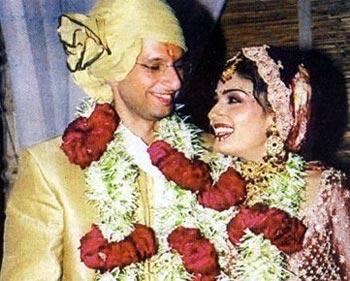
Karisma's co-star of films like Aatish and Andaz Apna Apna, Raveena Tandon was next to hit the altar. After a bitter break up with Akshay Kumar, the ravishing beauty found love in distributor Anil Thadani. The two promptly decided to marry. And how.
There was tons of opulence, for starters. Raveena's wedding was nothing short of a royal affair, right from its regal venue, Shiv Niwas Palace of Udaipur for the pheras or City Palace to host the sangeet festivities.
There was tons of opulence, for starters. Raveena's wedding was nothing short of a royal affair, right from its regal venue, Shiv Niwas Palace of Udaipur for the pheras or City Palace to host the sangeet festivities.
The sentimental actress requested designer Manav Gangwani to rework her mom's wedding sari for the D-day hoping to enjoy the same marital bliss as her.
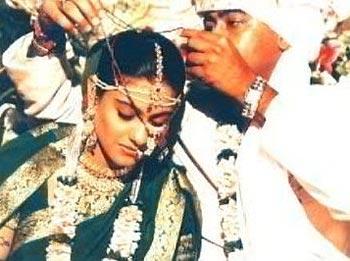
Unlike her colleagues, Kajol opted for a decidedly cozy, private celebration to wed longtime beau, Ajay Devgn. With the exception of Bachchans, Karan Johar and Rahul Rawail, only family and close friends from both the sides were included at the do.
Both Kajol and Devgn, known to be fiercely individualistic, didn't impose their traditions on the other. And so while Kajol wore a typical green Maharashtrian nine-yard sari with a studded nath (nose-ring) to go, Devgn slipped into a sherwaniand jasmine sehra. Earthy and classy, that's them for you.
Both Kajol and Devgn, known to be fiercely individualistic, didn't impose their traditions on the other. And so while Kajol wore a typical green Maharashtrian nine-yard sari with a studded nath (nose-ring) to go, Devgn slipped into a sherwaniand jasmine sehra. Earthy and classy, that's them for you.
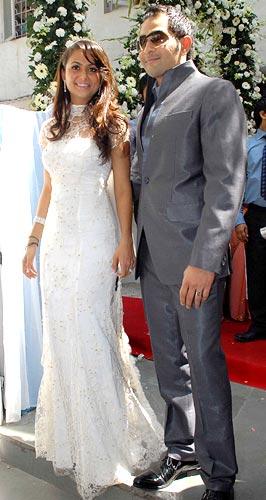
Amrita Arora's wedding was a three-day festival with several functions like a church wedding, sangeet and nikaah lined-up.
After exchanging vows with industrialist Shakeel Ladakh at the church, guests enjoyed a scrumptious brunch at Olive, a upscale restaurant in Suburban Mumbai with elder sister Malaika Arora playing the perfect hostess to a bevy of stars like Saif Ali Khan, Karisma and Kareena Kapoor, Salman Khan and Katrina Kaif.
Her star friends ensured they were part of all the festivities while Amrita beamed like a perfectly happy bride in an Ashley Rebello gown as well as Manish Malhotra designs.
Her star friends ensured they were part of all the festivities while Amrita beamed like a perfectly happy bride in an Ashley Rebello gown as well as Manish Malhotra designs.
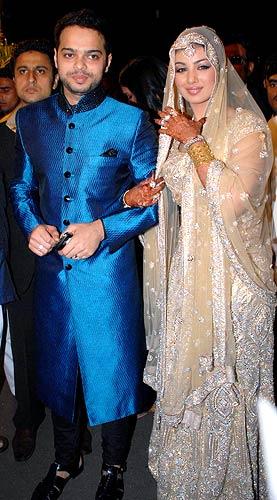
Ayesha Takia had to postpone her wedding, by a few months, to sweetheart of many years, restaurateur Farhan Azmi after the unfortunate 26/11 terror attacks on Mumbai.
Eventually, the duo got hitched with a lot of fanfare at Azmi's restaurant, Cafe Basilico followed by a extravagant reception at Cricket Club of India lawns, Brabourne Stadium in Churchgate.
The spontaneous star of the recent hit Wanted looked glorious and pleased holding on to her shy other half, in a shimmering gold-silver outfit adorned with glittering diamonds to go.
The spontaneous star of the recent hit Wanted looked glorious and pleased holding on to her shy other half, in a shimmering gold-silver outfit adorned with glittering diamonds to go.
The function was attended by Sanjay Dutt, Riteish Deshmukh, Suniel Shetty, Dino Morea, Abhishek Bachchan, accompanied by his mom, Jaya as well her Dor director, Nagesh Kukunoor








